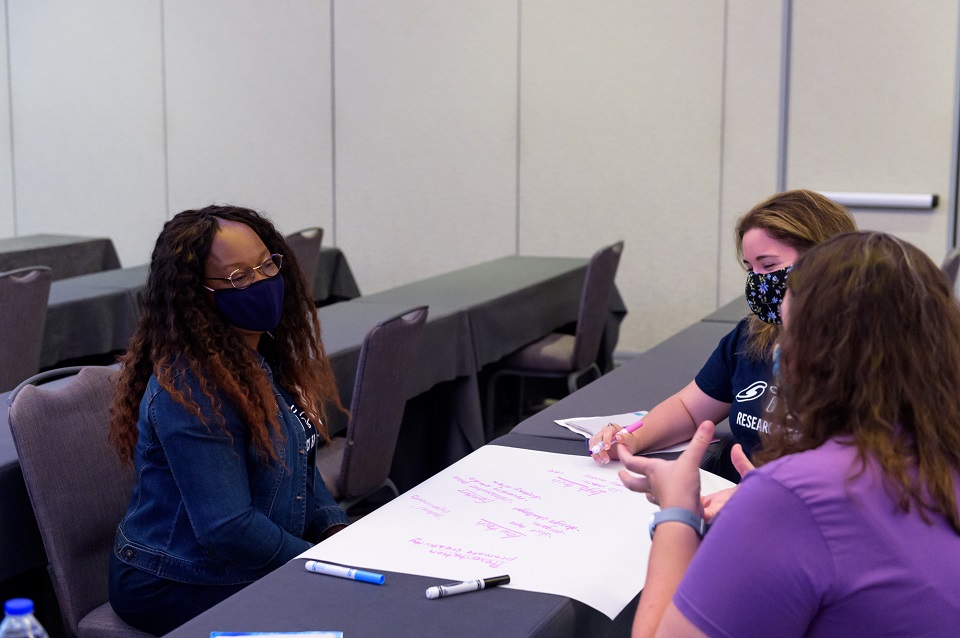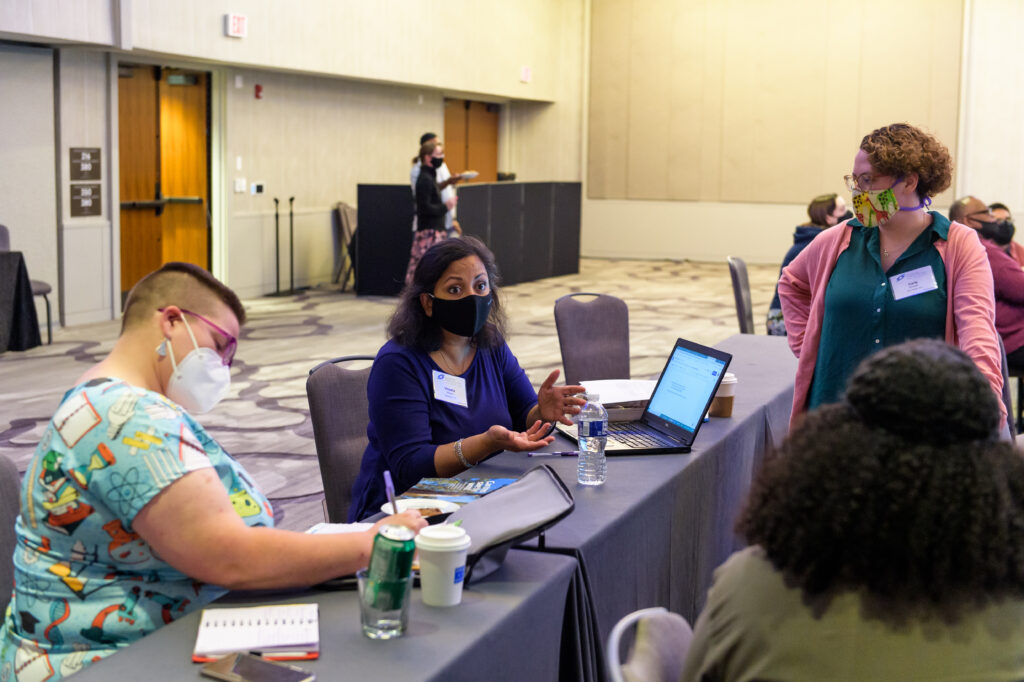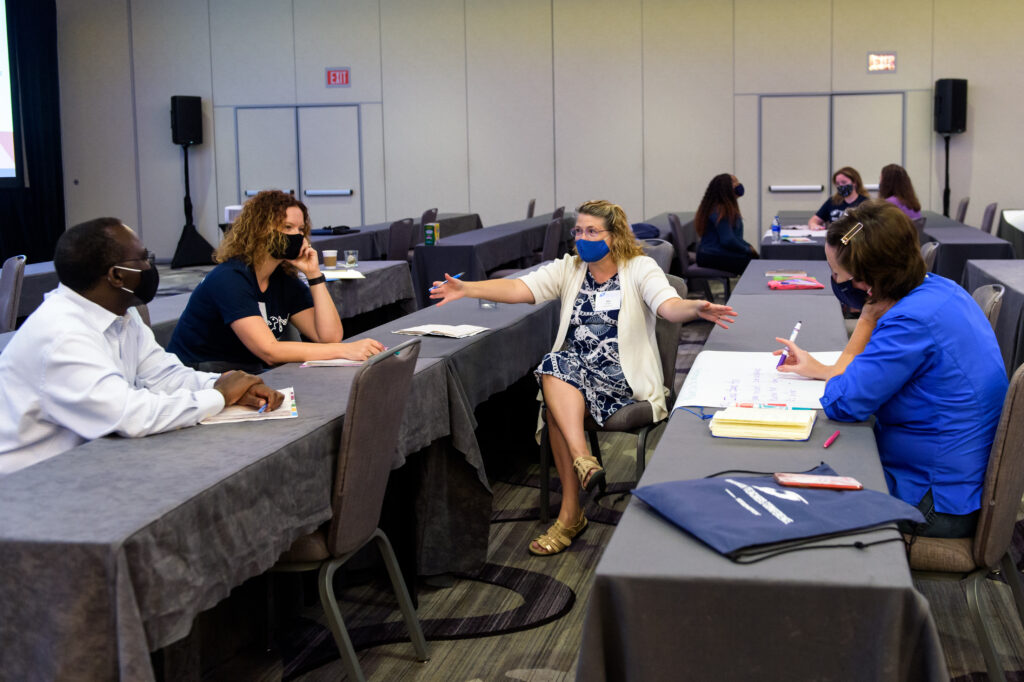Take five: Helping educators reduce stress in and out of the classroom

Results from a 2021 study, conducted through RAND’s American Teacher Panel, shows nearly one in four teachers were likely to leave teaching by the end of the 2020–2021 school year. That’s compared to the pre-pandemic average of one in six teachers who were likely to leave the field.

During the 2021 Society for Science High School Research Teachers Conference over 130 teachers from across the country attended workshops and sessions to solve challenges, improve teaching strategies and learn more about the Society for Science. The conference took place in October and had both in-person and virtual elements. COVID-19 vaccinations and adhering to strict safety protocols were required for all in-person attendees. The virtual portion took place in an avatar world and via Zoom so that attendees could interact with each other and view sessions live.

One timely session, led by Rama Devagupta, a chemistry instructor at Columbia Basin College and a biology teacher at Southridge High School in Washington, addressed the issue of reducing the mounting stress of educators. As an advanced neural educator, Rama is passionate about translating neuroscience research into practical teaching and tools that educators can adapt for their classrooms. She’s also a strong proponent of the idea that mental health of our teachers is critical to the field.
She says, “We need to pause and ask ourselves, ‘Am I recognizing my needs?’ We are so good in recognizing our students’ needs that we put ourselves on the backburner.”
Rama noted that while educators want to make sure they are helping their students become successful academically and socially, teachers need to remember to address their own mental health and physical needs as well. She says the best way to start addressing those needs is by taking mental health days, going to therapy and speaking with colleagues.
“Start telling people why you’re taking a mental health day. Put it in your calendar and email saying, ‘I am taking a mental health day, so I cannot be here at work today.’ Train your team to spot early signs of mental health struggles.”
Rama explained that when our brains go into high stress mode, the amygdala sets off an alarm that tells us ‘we’re in danger.’ This causes our prefrontal cortex, the rational thinking part of our brains, to shut down, sending our blood and oxygen supply to our amygdala, cerebellum and limbic system. She explained that this is also known as an amygdala hijack, when our brains shift from ‘thinking mode’ to ‘feeling mode’ and that the brain’s psychological stress is perceived as danger.
In addition to being transparent about taking mental health days, she encouraged educators to create virtual healing circles with coworkers, practice mindfulness or taking ten minutes to relax and nurture themselves amid their busy days. Rama says that doing these exercises can help flip the amygdala hijack, allowing you to take back control over how you respond to situations.
“By becoming more centered, we can manage our stress and better manage our time. You don’t have to say, ‘I don’t have 30 minutes.’ Five minutes is sufficient.”
Rama Devagupta is a high school teacher, advanced neural educator, freelance writer and Heartfulness meditation trainer. She received her PhD in bioorganic chemistry from Texas A&M University.


